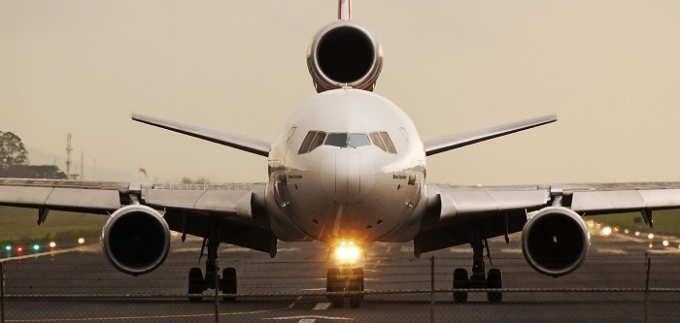Friday, 26/12/2025 | 08:42 GMT+7
A Northwestern University team has confirmed a new way to help the airline industry save dollars while also saving the environment. And the solution comes in three dimensions. By manufacturing aircrafts’ metal parts with 3-D printing, airlines could save a significant amount of fuel, materials, and other resources.
Led by Eric Masanet, the team used aircraft industry data to complete a case study of the life-cycle environmental effects of using 3-D printing for select metal aircraft parts, a technique that is already being adopted by the industry. The team concluded that 3-D printing the lighter and higher performance parts could significantly reduce both manufacturing waste and the weight of the airplane, thus saving fuel and money and decreasing carbon emissions.
Funded by the US Department of Energy’s Advanced Manufacturing Office, the case study is described in a paper published in the May issue of the Journal of Cleaner Production. Runze Huang, a graduate student in Masanet’s lab, is first author of the paper. Other authors include Matthew Riddle and Diane Graziano from Argonne National Laboratory.
“The airline industry is an early adopter of 3-D printing,” said Masanet, the Morris E. Fine Junior Professor in Materials and Manufacturing at Northwestern’s McCormick School of Engineering. “The main driver is that aircrafts require specialized lightweight metal alloys that can be very costly to process.”

Conventional manufacturing methods tend to be inefficient and wasteful. To produce a 1-kilogram bracket for an airplane, for example, it may require 10 kilograms of raw material input into the manufacturing process. And, from an engineering design perspective, that final bracket may still contain much more metal than is required for the job. 3-D printing, on the other hand, requires far less raw material inputs and can further produce parts that minimize weight through better design.
“We have suboptimal designs because we’re limited by conventional manufacturing,” Masanet said. “When you can make something in layer-by-layer fashion, those constraints diminish.”
Masanet does not anticipate a change to the crucial parts of the aircraft, such as the wings and engine, any time soon. But he does see real potential in the replacement of less flight-critical parts, such as brackets, hinges, seat buckles, and furnishings. According to the case study, 3-D printing a bracket, for example, reduced its weight from 1.09 kilograms to 0.38 kilograms. This might not seem like much, but it adds up.
“There are enough parts that, when replaced, could reduce the weight of the aircraft by 4 to 7 percent,” Masanet said. “And it could be even more as we move forward. This will save a lot of resources and a lot of fuel.”
If the 3-D components evaluated in the case study are used to their full potential, Masanet predicted it would greatly benefit the environment in more than one way. First, his team estimated that airplane fuel consumption could be reduced by as much as 6.4 percent, reducing both fossil fuel dependency and greenhouse gas emissions. Second, their life-cycle analysis found that manufacturing 3-D printed components uses as little as one-third to one-half of the energy currently used in conventional methods. Manufacturers would also potentially save thousands of tons of aluminum, titanium, and nickel that are otherwise scrapped every year.
But Masanet said there is one caveat. Scientists need to improve 3-D printing technology to realize the full extent of the estimated aircraft weight savings. Limitations in the process, such as issues with surface quality, residual stresses, repeatability, and throughput, are current barriers to full-scale adoption. But Masanet hopes this case study will provide further proof that continued research efforts and funding should be focused on improving the 3-D printing process.
“If we can accelerate the necessary process improvements, then we can start reaping these savings sooner,” he said. “Maybe then we can start seeing savings 10 years earlier than if we just let the technology progress at its regular rate.”
Anh Tuan








 Webinar 2: “Financial Support for Energy Efficiency Enterprises – Opportunities and Challenges”
Webinar 2: “Financial Support for Energy Efficiency Enterprises – Opportunities and Challenges”
 Vietnamese enterprises achieve green growth and cut costs through energy efficiency
Vietnamese enterprises achieve green growth and cut costs through energy efficiency
 Capacity Building for Program Implementing Entity
Capacity Building for Program Implementing Entity
 Enhance Energy Efficiency Knowledge for Managers of Cement Industrial Enterprises
Enhance Energy Efficiency Knowledge for Managers of Cement Industrial Enterprises
 Capacity building for participating financial institutions of the VSUEE Project
Capacity building for participating financial institutions of the VSUEE Project
 Capacity building for participating financial institutions in Ho Chi Minh City
Capacity building for participating financial institutions in Ho Chi Minh City
 Strengthening capacity for energy management officers of local government agencies
Strengthening capacity for energy management officers of local government agencies